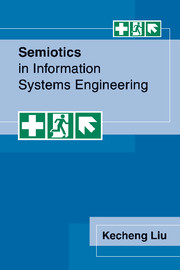1 - Introduction
Published online by Cambridge University Press: 19 September 2009
Summary
Infomation and information systems
What is information? Many people have attempted to give a definition but most of them are not complete. A typical explanation is that information is processed data that has meanings to its users. But then questions arise in what meaning is. If information is to the study of information as object is to physics, and there are many laws by which we can study objects, then what are the laws by which we can study information? What is the study of information anyway?
What can be said here is that information is not a simple, primitive notion. Devlin (1991) compares the difficulties for a man in the Iron Age to answer the question ‘What is iron?’ and for a man in today's Information Age the question ‘What is information?’ To point to various artefacts of iron in order to answer his question would not be satisfactory; to demonstrate some properties of information as an answer to ‘What is information?’ is not good enough either. People can feel the possession of information, and can create and can use information. They gather it, store it, process it, transmit it, use it, sell it and buy it. It seems our lives depend on it; yet no one can tell what exactly it is.
In order to understand the nature of information, one may have to find some fundamental and primitive notions with which the question can be investigated and explained.
- Type
- Chapter
- Information
- Semiotics in Information Systems Engineering , pp. 1 - 10Publisher: Cambridge University PressPrint publication year: 2000



